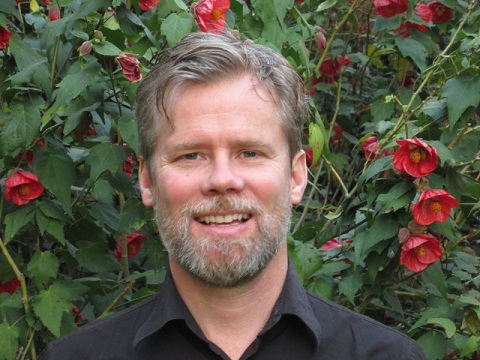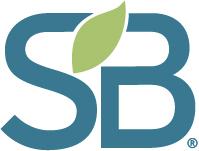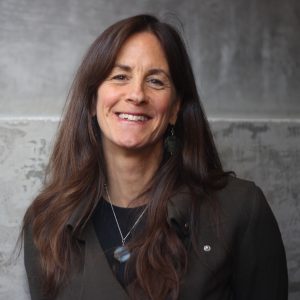As a lead up to Sustainable Brands conference SB’18 , students, alumni, and faculty of our MA in Sustainable Design program interviewed selected speakers — leaders in sustainability initiatives. In this blog we share our interview with Neal Gorenflo, Executive Director of Shareable.
What did you talk about at SB’18?
The era of fast and inexpensive online customer acquisition is coming to an end. Companies are starting to grow in a completely different way out of necessity because Google and Facebook dominate the web and increasingly require brands to pay to play.
Brands are creating new, more holistic — and sometimes even transformative — relationships with customers and other stakeholders. This includes everything from proprietary online communities, to secondary marketplaces, to giving customers ownership and/or decision-making power. These strategies give more voice and sometimes even a share in the value that’s created to those that actually create the value, which in a digital economy is increasingly customers themselves.
For example, Intel created proprietary online community to stoke collaboration between and with developers using Near Me’s SaaS platform marketplace solution. Kidizen is setting up secondary markets for kids clothing brands so customers can buy and sell used clothing from each other.
Platform cooperatives take this even further. A prime example is Stocksy United, an online stock photo marketplace owned and governed by the contributing photographers. It’s working — there are 1,000 worker owners, over $12 million in annual revenue, and there’s a waiting list of 10,000 creatives who want to join.
Blockchain technology is the bleeding edge. It underpins what are called decentralized autonomous organizations, which represents a radical decentralization of power and ownership of the enterprise using a combination of peer networking, distributed accounting, smart contracts, and cryptography. One of our partners, DigitalTown, is using this approach in a network of city-based marketplaces.
Brands are increasingly getting a competitive edge through relationships rather than technology. A new social contract may be emerging in the process.
What is the most exciting thing you’re working on?
I’m pretty excited about our global distributed book tour for my organization’s new book, “Sharing Cities: Activating the Urban Commons.” The research we did for the book uncovered the trend that I talked about at SB18. Moreover, the challenges cities face will require the new types of enterprises that I just described.
What excites me most about the tour is that we’re crowdsourcing it like we did the book itself. We’re inviting people over the world to host their own book-related events. People are endlessly creative, so it’s really fun to see what our community members do with this invitation. In some cases, the people behind the social enterprises we profile are bringing the book alive in their communities through book events they design. That said, anyone can do a book event. You can download a free PDF of the book and sign up to do a talk here.
What was your personal path to sustainability?
It was an internal process that started nearly 15 years ago. Basically, I realized that on paper I was doing OK, but I didn’t feel OK at all. Despite having friends, a decent career, and enough “stuff,” I felt lonely, unfulfilled, and disempowered. I had a moment of insight that showed me how deeply I and many others suffered in an economic system that separates us from ourselves, each other, and nature. I become passionate about how the economy could support human development, social cohesion, and environmental restoration.
I got interested in sharing as a sustainability strategy.
Sharing often has multiple positive impacts. I believed it should be part of, if not central to, the sustainability solution set. This was not part of the sustainability narrative back then, so I made it my mission to bring sharing to the table.
If you could travel back in time what would you tell your 20-year-old self?
On the one hand, I don’t want to say anything to the 20-year-old. That 20-year-old was confused and self-destructive, but he needed to learn the important lessons on his own. On the other hand, I might say to him what I need to remind myself to do every day — don’t worry so much, enjoy being alive, accept yourself and others more, be a better friend, lover, citizen, and family member.
What has been your proudest moment in sustainability?
I take great pleasure in seeing people around me flourish. I wish I could support more people, more deeply in that process. When I play a small role in that happening, I suppose I feel some pride. I definitely feel more fulfilled as a person.
I’m also grateful for eventually being able to commit to a life of purpose.
That’s when I really started to become a person and learned how to lead a life rather than follow a script. There was a lot of internal work behind this. I learned to turn off the media, listen to my dreams and visions — including the far out ones I had while asleep at night — and to wonder what they meant and what they called me to do and be. Part of my practice to this day is to do as Martha Graham implored — keep the channel open.
If you had a magic wand and could completely solve one sustainability problem, what would it be?
I’d like to push back against this question. We have to be careful about silver bullet thinking! There is no one solution. We need to think long term and in systems. We need to be driven not by market time but civic time, which is slower. We need to deliberately bring more people into the solutions, everyone and all living things. We need to build a whole new set of institutions, and this takes time, perseverance, and skill. We have to commit to the hard work of redesigning our entire society for different results. There’s no silver bullet, shortcut, hack, savior, or magic wand that can do this.
I also refuse the magic wand because I love life. I deeply love the majesty of natural world and many beautiful expressions of ourselves we see in cultures around the world. These are irreplaceable treasures that not only make human life possible, but also worth living. It’s worth any trial to save these. To paraphrase JFK, I think many of us do sustainability work not because it’s easy, but because it’s hard and it might just bring out the best in us. So, I chose becoming and life over the magic wand.
Thank you, Neal!
~Denise
If you are passionate about how the economy could support human development, social cohesion, and environmental restoration, explore our fully online MA in Sustainable Design program!


